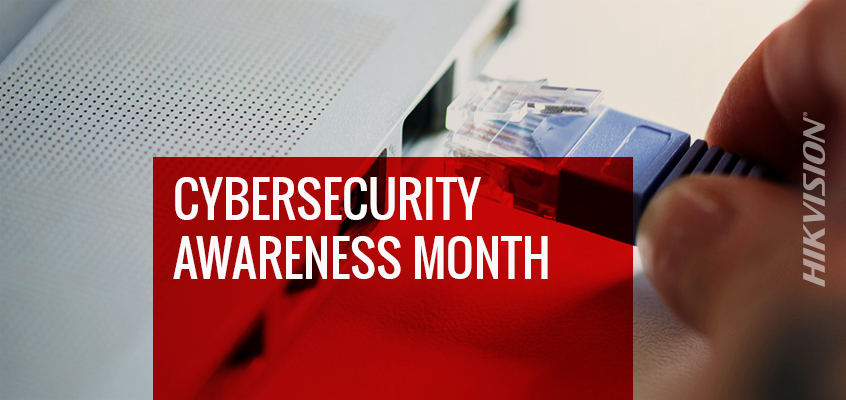Hikvision Helps to Raise Cybersecurity Awareness during US Government’s National Cybersecurity Awareness Month

October is National Cybersecurity Awareness Month (NCSAM), and Hikvision USA Inc. is pleased to join with the Department of Homeland Security (DHS) and other businesses to help raise cybersecurity awareness.
A collaborative effort between the U.S. government and industry, the goal of NCSAM is to ensure that all Americans have the resources they need to stay safe and more secure online. These best practices are applicable globally, to anyone who has Internet access. In its materials about NCSAM, DHS says, "Cybersecurity is not just the responsibility of governments, companies, groups, or individuals. Everyone shares the responsibility for cybersecurity, from the average smartphone user to a corporate CEO."
Key messages for NCSAM 2018 from the DHS website include:
- Strengthen the Nation's cybersecurity ecosystem
- Cybersecurity is a cross-cutting, cross-sector challenge, so we must tackle it together
- Increase and strengthen the cybersecurity workforce across all sectors
- Secure critical infrastructure from cyber threats
Hikvision’s director of cybersecurity, Chuck Davis, will be authoring several HikWire blogs this month for NCSAM, providing insights and advice to help secure our homes, our workplace and the global Internet at large.
“Much like physical security, one must understand how to proactively set up and maintain an environment that both prevents and responds to cyberattacks. For example, putting a sign in your front yard that shows your house has security cameras is a preventative measure because thieves are less likely to prey on a house with security cameras. However, if someone did try to break in, your cameras and alarm system would immediately alert you and law enforcement that a potential attack is underway. This is the responsive measure.”
For more cybersecurity blogs from Hikvision, visit this link. Click here to access resources at our online Cybersecurity Center.
